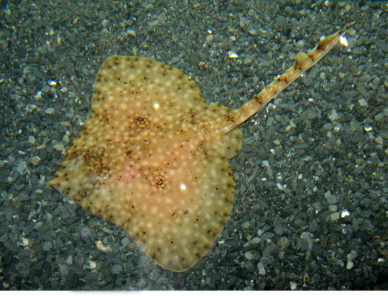Alaska Species Explorer
All
x
- – No known individuals remaining.
- – Known only to survive in captivity, or as a naturalized population outside its historic range.
- – Extremely high risk of extinction in the wild.
- – High risk of extinction in the wild.
- – High risk of endangerment in the wild.
- – Likely to become endangered in the near future.
- – Lowest risk. Does not qualify for a higher risk category. Widespread and abundant taxa are included in this category.
- – Not enough data to make an assessment of its risk of extinction.
- – Has not yet been evaluated against the criteria.
Alaska Skate
- – No known individuals remaining.
- – Known only to survive in captivity, or as a naturalized population outside its historic range.
- – Extremely high risk of extinction in the wild.
- – High risk of extinction in the wild.
- – High risk of endangerment in the wild.
- – Likely to become endangered in the near future.
- – Lowest risk. Does not qualify for a higher risk category. Widespread and abundant taxa are included in this category.
- – Not enough data to make an assessment of its risk of extinction.
- – Has not yet been evaluated against the criteria.
Bering Sea, Aleutian Islands, Gulf of Alaska; western Bering Sea to Japan at a depth of 17-392 m (56-1286 feet)
Alaska skates are a long lived species that are oviparous (egg laying) and reach maturity around 10 years of age. A female will lay eggs throughout the year and it is estimated that she will lay 20 to 40 egg cases each year. After an egg case is laid, it will sit on the bottom incubating for over 3.7 years before a single embryo emerges as a fully developed juvenile skate.
The diet of the Alaska skate changes as it grows. Small juvenile skates consume small crustaceans like gammarid amphipods and small hermit crabs and as they get larger they start mixing small fish to their diet like Pacific sand lance along with larger crab species. Over 75% of a large Alaska skate's diet can be fish species such as Atka mackerel and walleye pollock.
Hairy triton snails can prey upon the developing embryo by drilling through the tough egg case. After hatching, a young skate is vulnerable to predation by Pacific halibut and Pacific cod. Steller sea lions have been observed feeding on larger skates, and it is likely that other marine mammals will eat skates too.
The Alaska skate is perhaps the highest biomass skate species within Alaska waters. Although there currently isn't a direct fishery for skates in Alaska, there is ever present interest in developing one and retention of large skates caught in other fisheries does occur. They are primarily caught in hook and line fisheries and bottom trawl fisheries.
Several nursery areas have been identified within Alaska waters for skates. These can be over a square kilometer in area and some have egg densities over 100,000 eggs per square kilometer.







